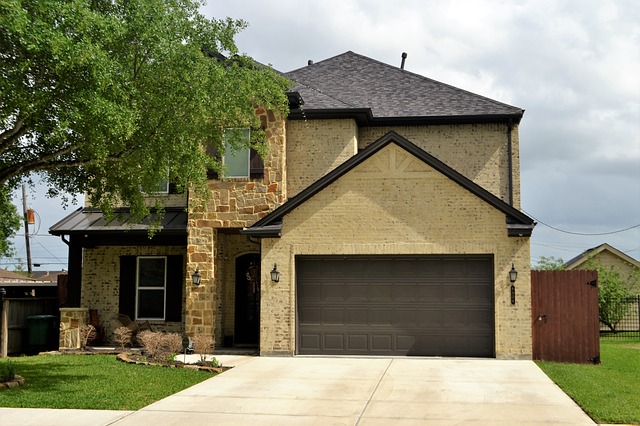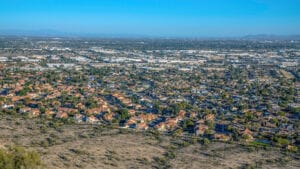When looking for a siding for your home, one of the first things you should consider is maintenance. Some siding materials like wood need constant care.
Your best bet for low-maintenance siding is Vinyl. It lasts forever and needs little attention other than the odd wash if it gets grubby. Aluminum and fiber cement are also great options as they also need very little attention over their lifetime.
Which is the best for you and your home, let’s find out.
What makes a siding low-maintenance?
It’s common knowledge that all siding will require basic cleaning and dusting to retain its appeal. But in this case, that’s not all that makes a siding low-maintenance.
There are several characteristics that define a low or zero maintenance siding material – all defined in this blanket definition;
The ability of the material to withstand adverse weather conditions, mold and insect infestations, as well as impact and scratches without losing its original color, texture, and strength.
Durability is also a common property for low-maintenance siding. It should have a relatively long lifespan without requiring any serious repairs or replacements.
Low-maintenance siding options
Here are some of the popular low-maintenance siding options in the market. Our decision of the best ‘low-maintenance’ is based on the material that satisfies all our requirements above.
Winner – Vinyl siding
Being the most popular siding option in the country, vinyl sidings was bound to top this list. It’s also one of the cheapest in the market and offers a great deal of flexibility in style and colors making it perfect for homeowners.
Maintenance required: Power Washing the surface to get rid of any dirt, dust, or debris. Very minor repairs may also be required from time to time.
Pros of Vinyl siding
Doesn’t require painting – Unlike other materials, vinyl’s natural color goes through the planks meaning that the colors can’t chip or peel. Modern vinyl is also quite resistant to fading.
Moisture and insect resistance – Vinyl isn’t affected by insects, molds, or moisture. When properly installed, you’ll never have to deal with water damage.
Wide range of colors – Despite being plastic, Vinyl can be crafted to like any finish you want, be it wood or stone. It’s also available in a wide range of colors and patterns.
Durable – Vinyl siding can last up to 60 years with very little maintenance but in the right weather conditions.
Very affordable – Vinyl siding costs an average of $1.44 – $2.93 per sq. ft making it cost-friendly.
Cons of vinyl siding
• It’s prone to melting and cracking when exposed to extremely hot and cold temperatures respectively.
• Poorly installed vinyl siding can hide severe moisture problems behind it.
• Likely to dent on impact with external features like a tree branch or baseball.
Best runner up – Modified wood siding
Modified wood siding is another top option to consider if you want that authentic look of real wood, but without its associated intense maintenance.
It’s relatively new in the market and is made by heating natural wood to extremely high temperatures in an oxygen-free environment, resulting in changes to its structure.
Maintenance required: Annual inspection, regular sealing and staining.
Pros of modified wood siding
Resistant to rot and decay – Unlike traditional wood, this type of siding isn’t subject to rotting over time and resists insect activities better.
Weather-resistant – Due to its extreme manufacturing process, modified wood is more suited to the outdoors. It’s not affected by rain, snow, or sunshine.
Doesn’t require painting – If you love the rustic natural wood look, you don’t have to paint this siding. However, it’s still advisable to seal or stain it after installation.
Less prone to shrinking and swelling.
Cons of modified wood siding
• Restricts your color options – Some modified wood can’t be painted over. This limits homeowners in the color appearances they have for their homes.
• It’s likely to crack or flake after a while.
• May fade due to exposure to UV light.
Honorable mention – Metal/ Aluminum siding
Aluminum siding is among the oldest siding options available today. It’s not the most popular in residential homes, but it’s preferred when looking at maintenance. Compared to steel sidings, aluminum shines when it comes to rust resistance.
Maintenance required: Regular washing (power washer) and painting.
Pros of metal siding
Very durable – Aluminum can easily last for more than 50 years with minimal need for maintenance.
Moisture and insect-proof – metal sidings don’t absorb or soak in water and moisture. As such, they can’t rot. They’re also not damaged by insect activity.
Weather-proof – Unlike vinyl, aluminum won’t melt in the sun or crack and shrink in cold. For homes in coastal areas, it’s less prone to rusting.
Good insulator – Aluminum portrays excellent insulation properties during the cold winters keeping the warmth in, and in hot summers, keeping the heat out.
Cons of metal siding
• Fades quickly compared to other materials leaving a powdery finish that rubs off clothing.
• Dents easily and leaves visible marks when in contact with other objects.
• Requires regular painting to retain its color.
Best low budget – Fiber-cement siding
Arguably the biggest contender for the top spot with Vinyl, fiber-cement is another material that required almost no maintenance. It’s made from a mix of sand, cement, cellulose fiber, and silica. Fiber-cement sidings often mimic the rustic real wood look but with visible seams.
Maintenance required: Wash down the siding using a garden hose and a soft brush at least once annually.
Pros of fiber-cement siding
Weather-resistant – Fiber cement can withstand harsh weather for several years without any damages. It’s not affected by hail, snow, UV rays, or ice.
Very durable – The material doesn’t rot and can’t be destroyed by insect attacks. It’s also better suited to resist combustion compared to other materials.
Flexible appearance options – Fiber-cement allows you to choose the original wood appearance or a variety of other colors, patterns, and textures available. It also adheres well with paint.
Resists color fading, chipping, and peeling longer than wood sidings.
Cons of fiber-cement siding
• Absorbs moisture – Penetrations and gaps on the fiber-cement siding allow it to hold moisture resulting in water damage and other moisture problems.
• Regular re-painting – the material requires regular painting, at least once every 10 -15 years, which increases your overall long-term costs
• Expensive – Installing this siding is quite expensive due to the hefty labor and materials costs.
Best premium – Stone veneer siding
Stone veneer siding is loved not just for its natural appearance, but also for low maintenance. Unlike materials like wood and metal, it doesn’t require painting, scraping, or other maintenance care services.
Maintenance Required: Use a soft-bristled brush to dust away any dirt then use a bleach-free cleaning product to wash the surface.
Pros of stone veneer siding
Very durable – Being a stone product, you can be sure that your siding will last a lifetime. In fact, most manufacturers will offer warranties of up to 75 years.
It’s beautiful – Stone veneer siding is the real thing. If installed correctly, it gives your home an authentic rustic appearance and adds more texture to your exterior.
Versatile finishes and colors – Stone veneer is flexible and can be designed and painted over any colors, patterns, and textures to suit your style. It can also be installed in all designs including curved surfaces.
It’s energy-efficient, eco-friendly, and fire-resistant.
Cons of stone veneer siding
• It’s prone to trap moisture which makes It susceptible to water damage and mold/mildew infestation.
• May crack after a while resulting in difficult and costly repairs.
• It’s very expensive although cheaper than natural stone.
Alternate 1 – Stucco siding
Regarded as the oldest siding option in history, Stucco has for years been associated with low maintenance. It’s quite popular among homes with the Mediterranean or Spanish-mission exterior designs.
Maintenance requirement: Clean the stucco surface with a pressure washer or water and a cleaning agent once every two years. Homes older than 7 years may need repainting if they start fading.
Pros of stucco siding
Most durable – Stucco sidings are known to last as long as 100 years without any need for serious repairs and maintenance over the years.
Fire, insect, and rot resistance – Stucco is incombustible, and can’t rot or succumb to insect attacks. It’s also unaffected by any impact from other objects.
Attractive appearance – Besides the traditional white stucco, homeowners today can choose from a wide range of colors and textures for the finish.
No need for painting – Stucco retains its color longer than most other siding options, thereby eliminating the need for repainting every few years.
Cons of stucco siding
• Porous or absorbent – stucco sidings absorb moisture, unlike other sidings. This exposes it to dangerous impacts like mold growth and water damage. Not suitable for homes in wet areas.
• When improperly installed, stucco may develop large cracks that become expensive depending on the size.
• Installation is labor-intensive and hard.
Alternate 2 – Brick siding
Brick may be widely known for its durability and natural elegance but it also shines in the maintenance aspects. You can be certain that you won’t spend a lot of time or money on its maintenance.
Maintenance required: Regularly wash down your siding with a garden hose and then regularly replace any parts that deteriorate.
Pros of brick siding
• Durable and long-lasting and can last for more than 100 years
• Brick is fire-resistant and enables the fire to be contained in just one part of the house
• Great insulation properties
Cons of brick siding
• Very expensive
• Limited color choices for homeowners
• It’s affected by temperature changes
Choosing the right siding for your home
Once you understand these siding options, it’s worth noting that the lowest-maintenance siding isn’t always the best siding for your house.
Before considering the maintenance requirements, you also have to consider factors such as:
• The costs – Low maintenance doesn’t equal cheaper installation or faster return on investment. You, therefore, have to consider both the short and long-term financial costs of the siding option and whether your budget will allow you to get it.
• Your area’s climate – Some siding options perform better under adverse weather conditions compared to others. For instance, vinyl siding may melt in an area with hot climates and crack in cold weather, while more durable options like stone and metal may not be affected.
• Versatility – Depending on your style and color preferences, you need a siding that accommodates your needs.
Look into whether the option can be painted and how many design options it offers.
Other aspects such as fire resistance, insulation and energy efficiency (R-value rating), water resistance, and ROI during resale are also important factors.
FAQ’s
What is the most durable siding for a house?
Engineered wood and vinyl sidings are among the most durable and affordable on the market, lasting for more than 80 years. Stone and brick are also very durable and can last 100+ years, but they’re more costly than other alternatives.
What siding does not have to be painted?
Vinyl, fiber-cement, and stucco sidings are among the sidings that don’t have to be painted. However, you can paint most of them if they don’t meet your preferences or style.
Does new siding increase home value?
Yes! According to the National Association of Realtors, adding a new siding to your home can increase your home’s value by 65 – 90% depending on the type of siding you opt for.




